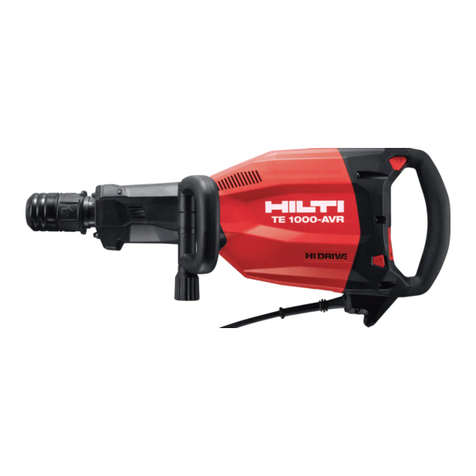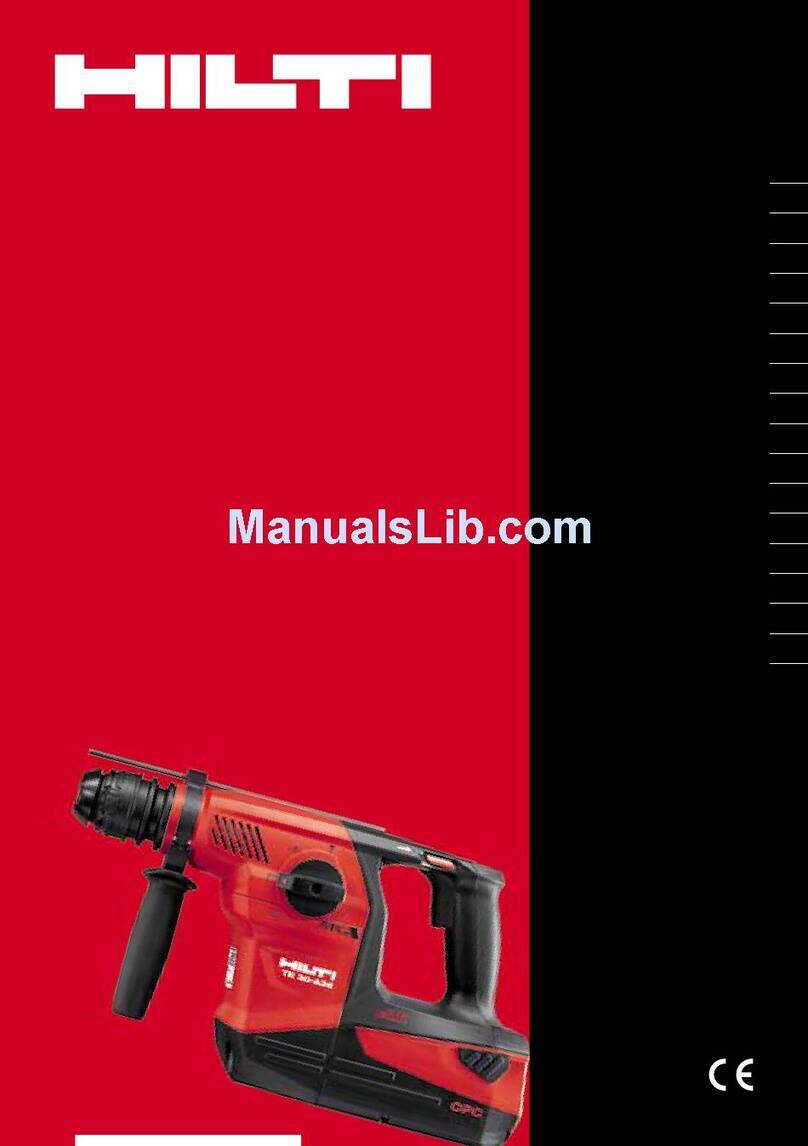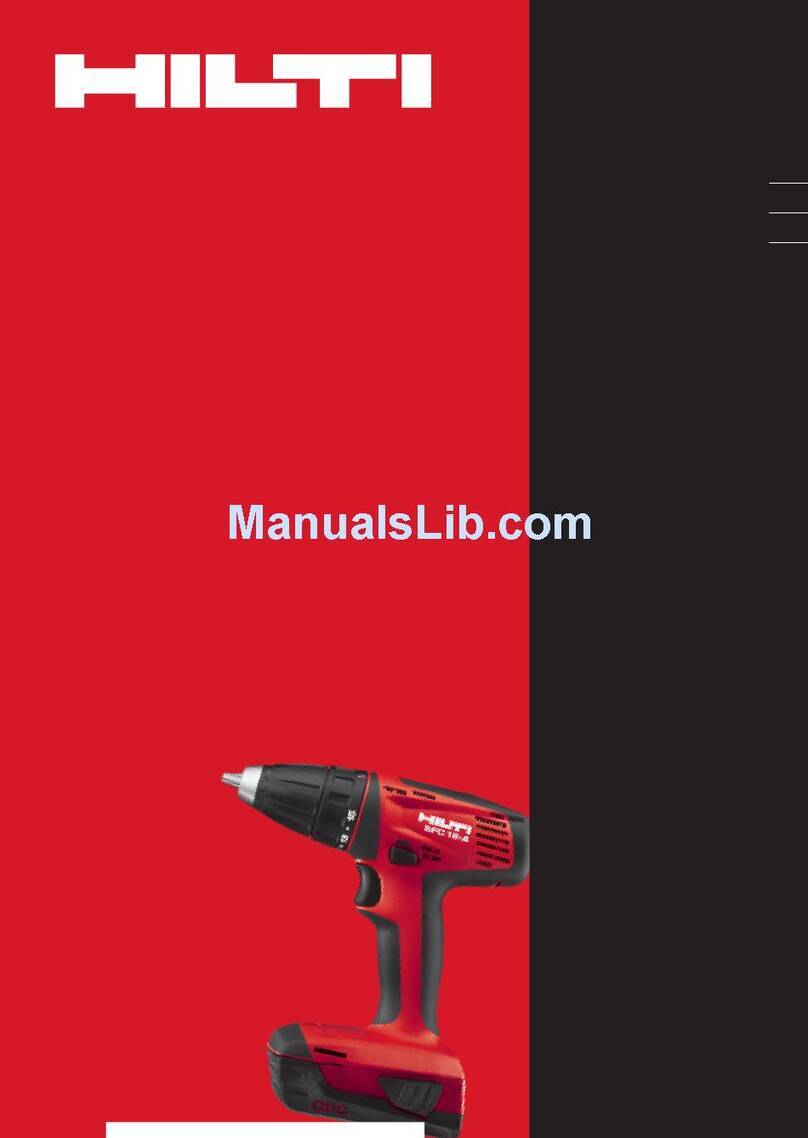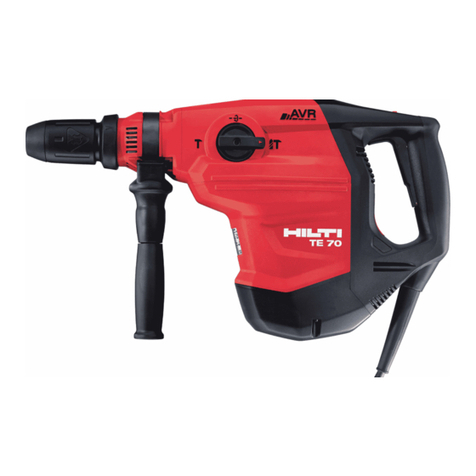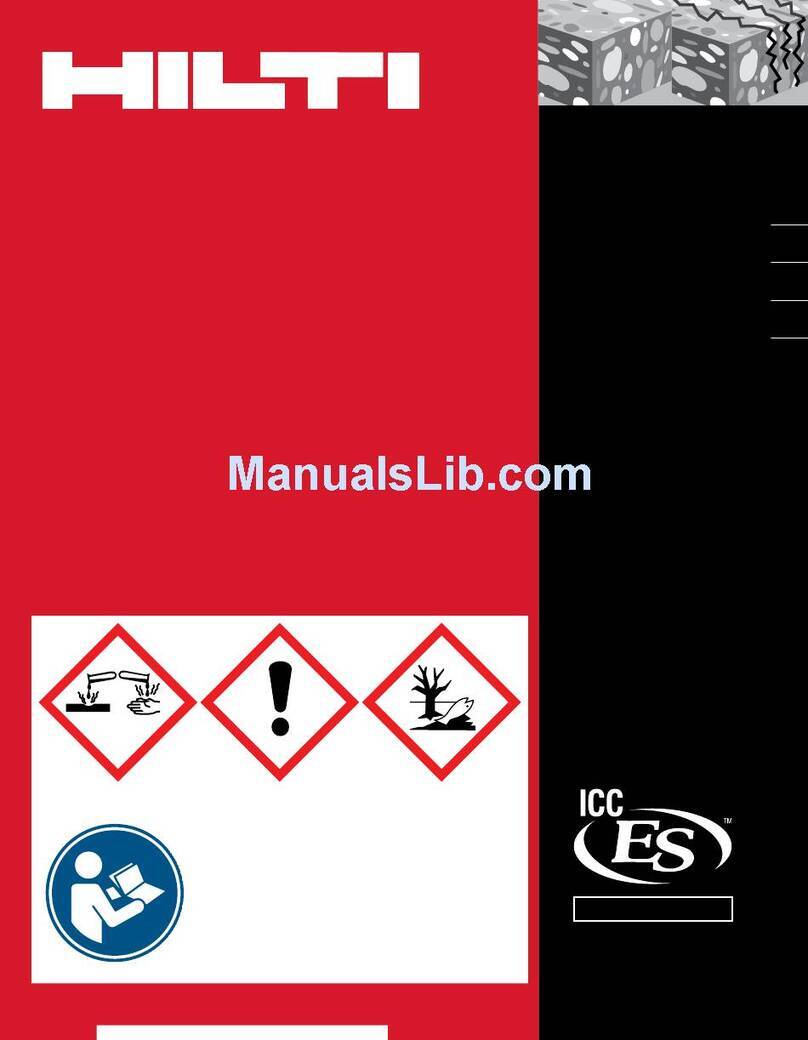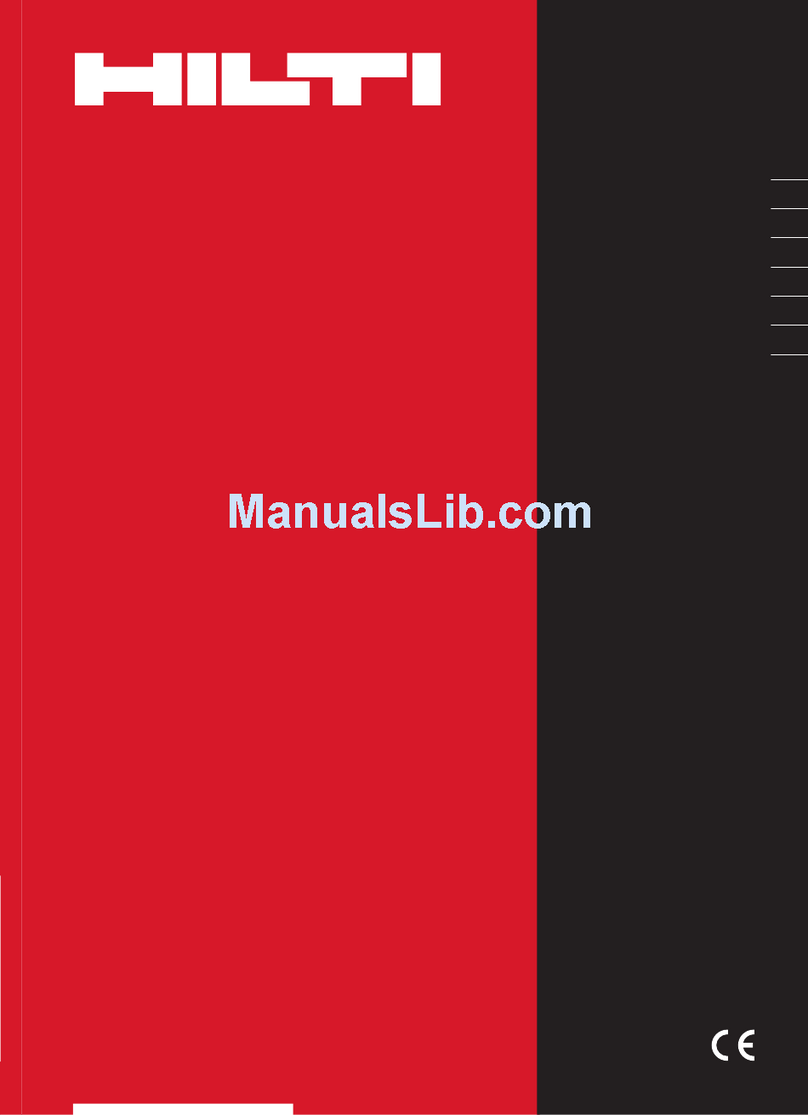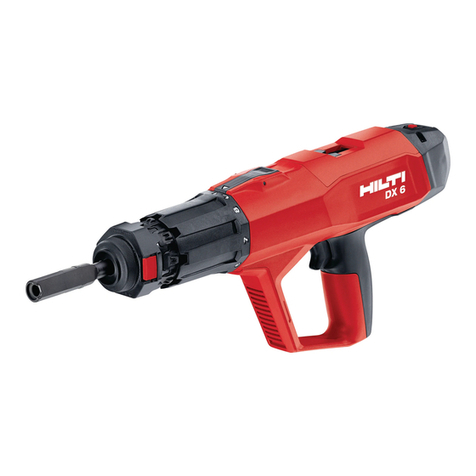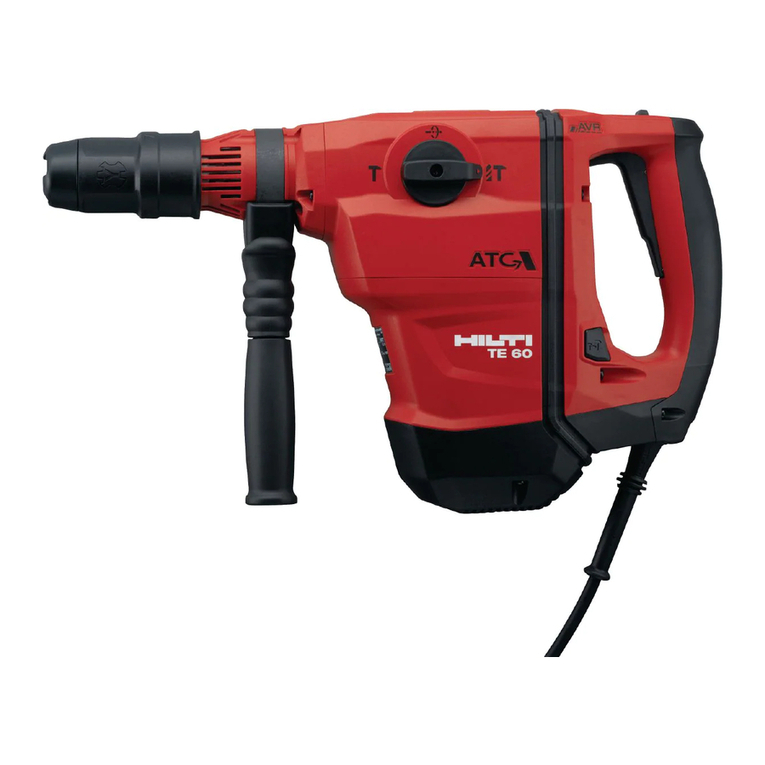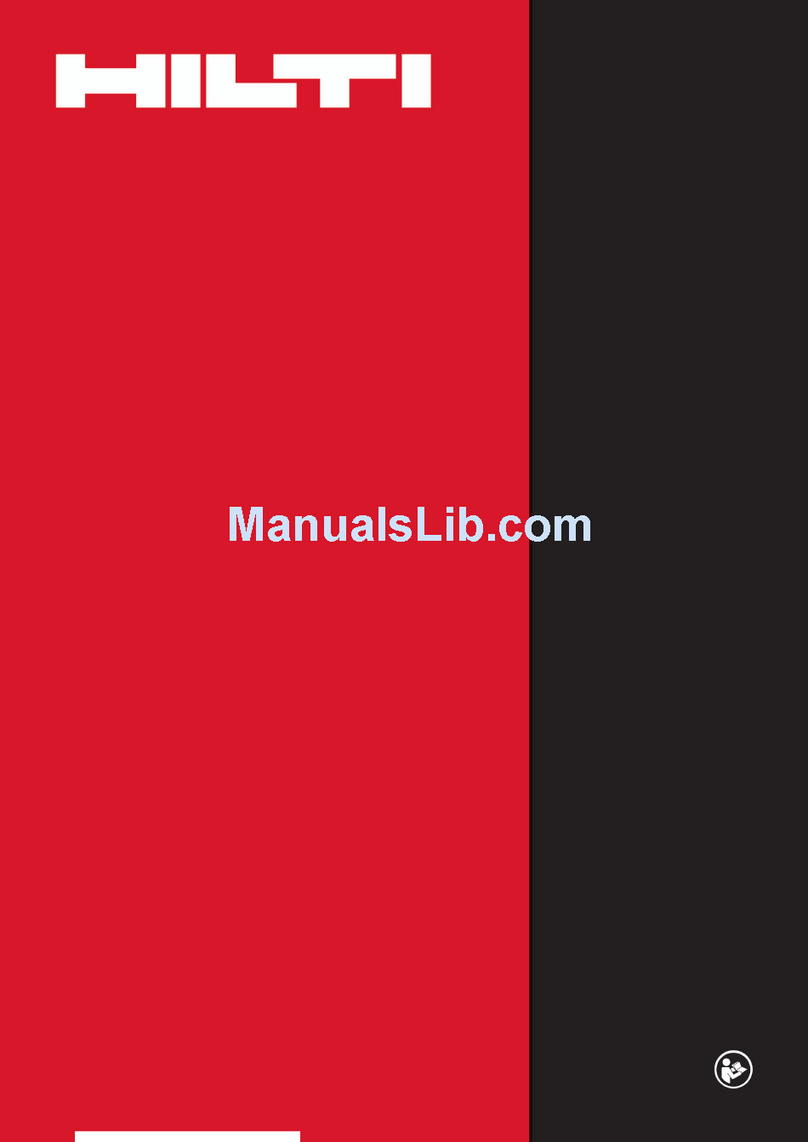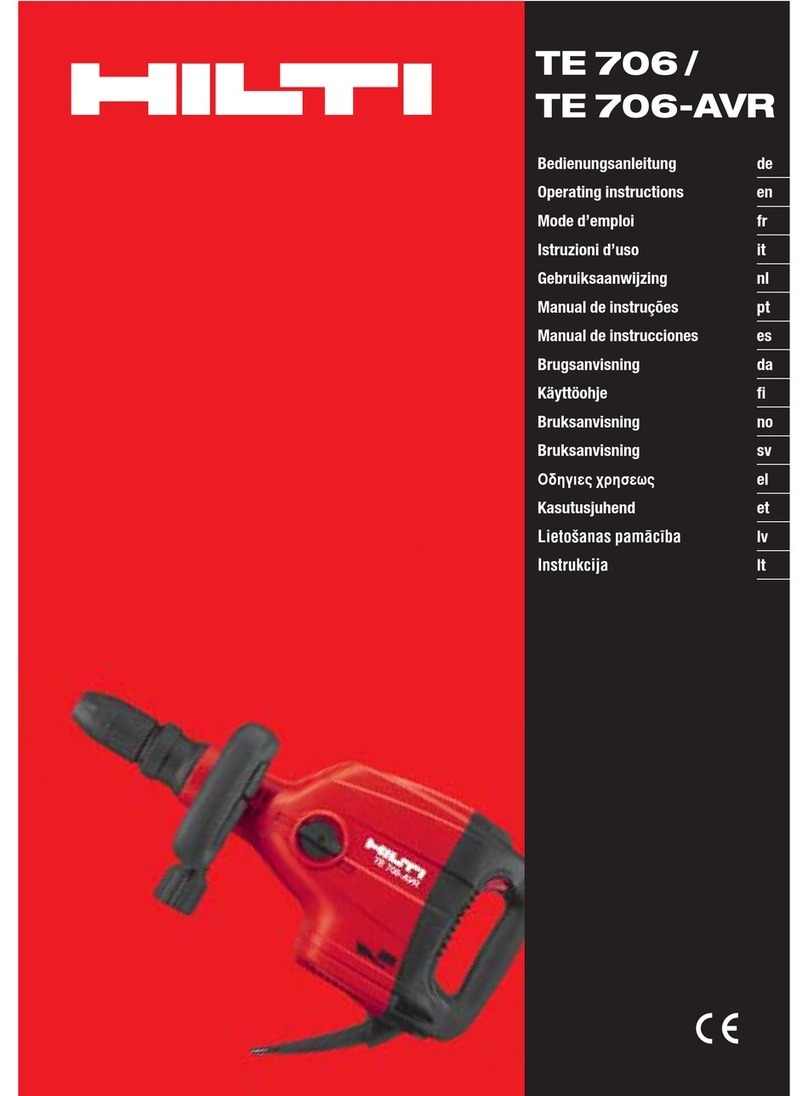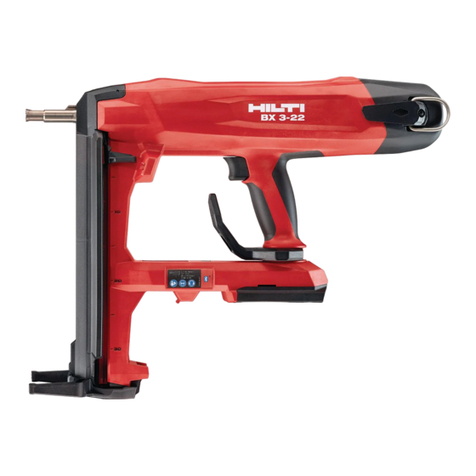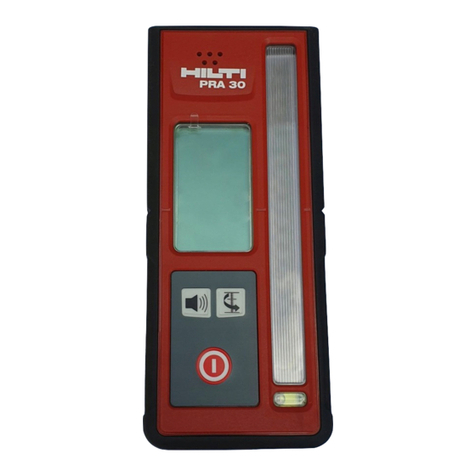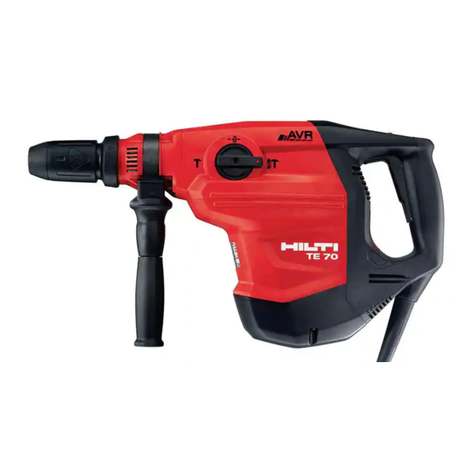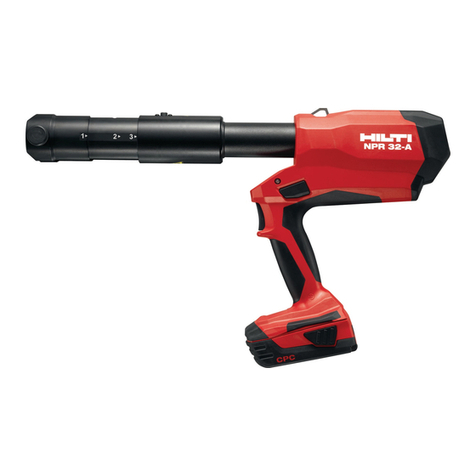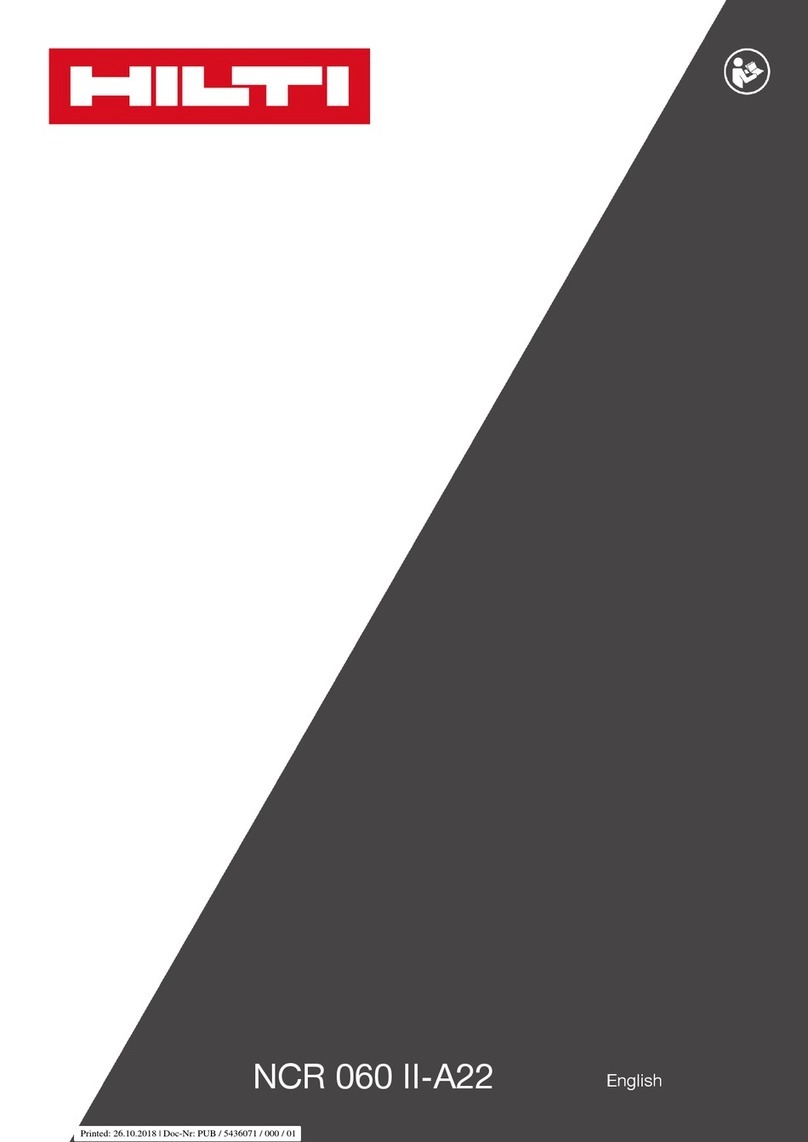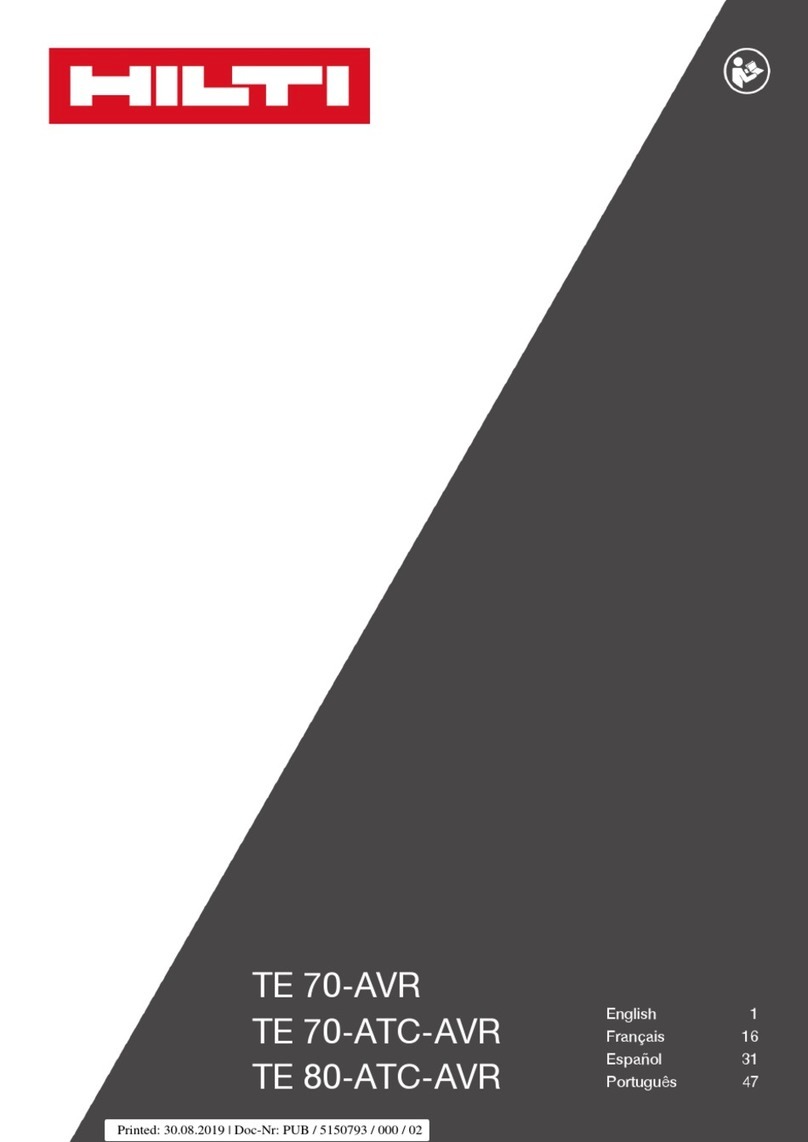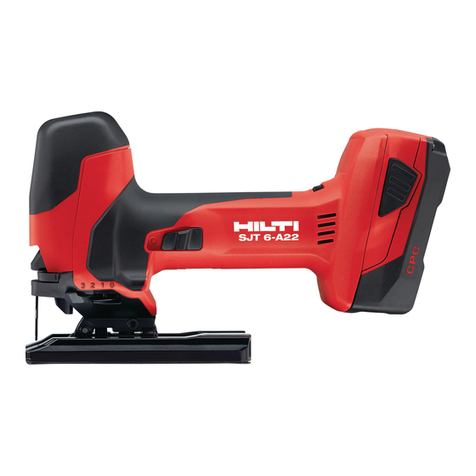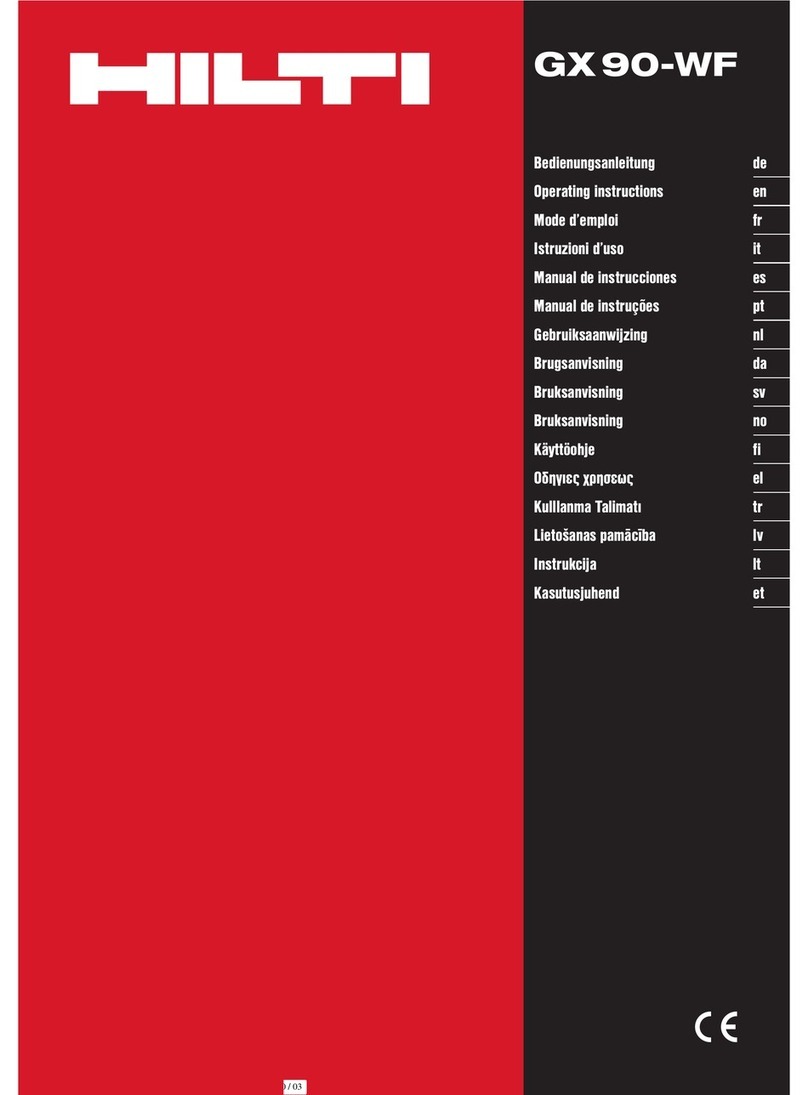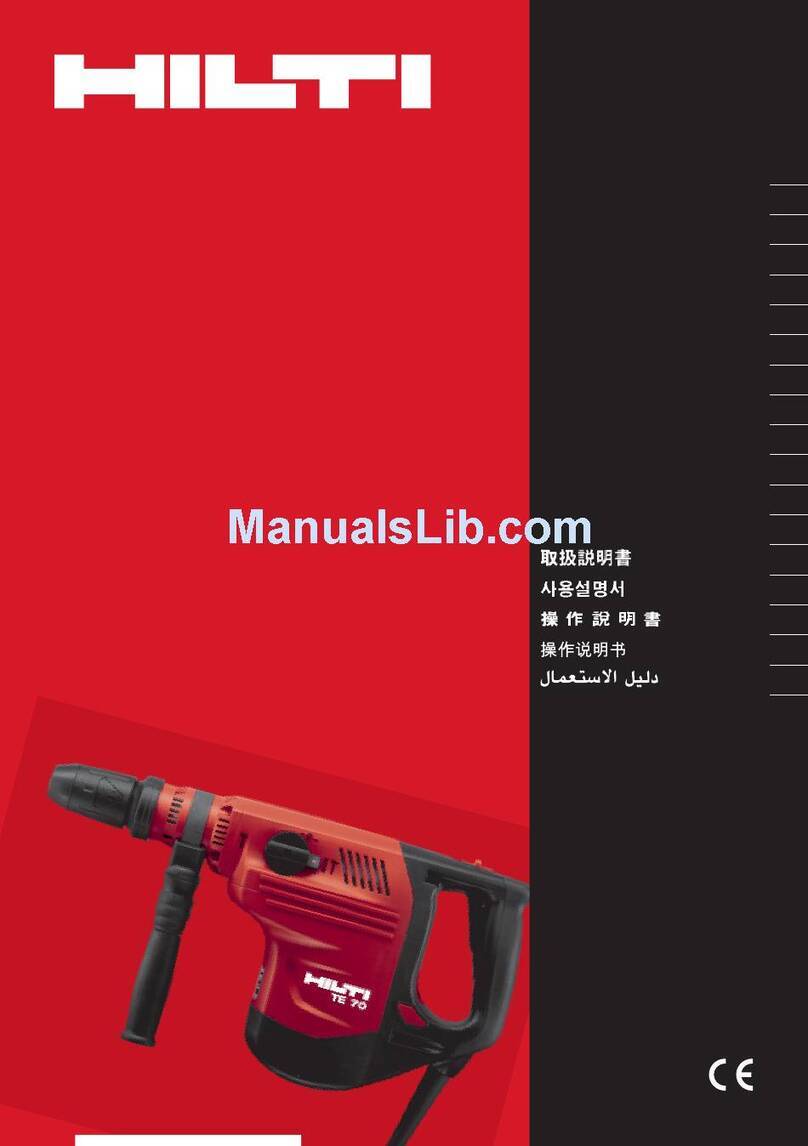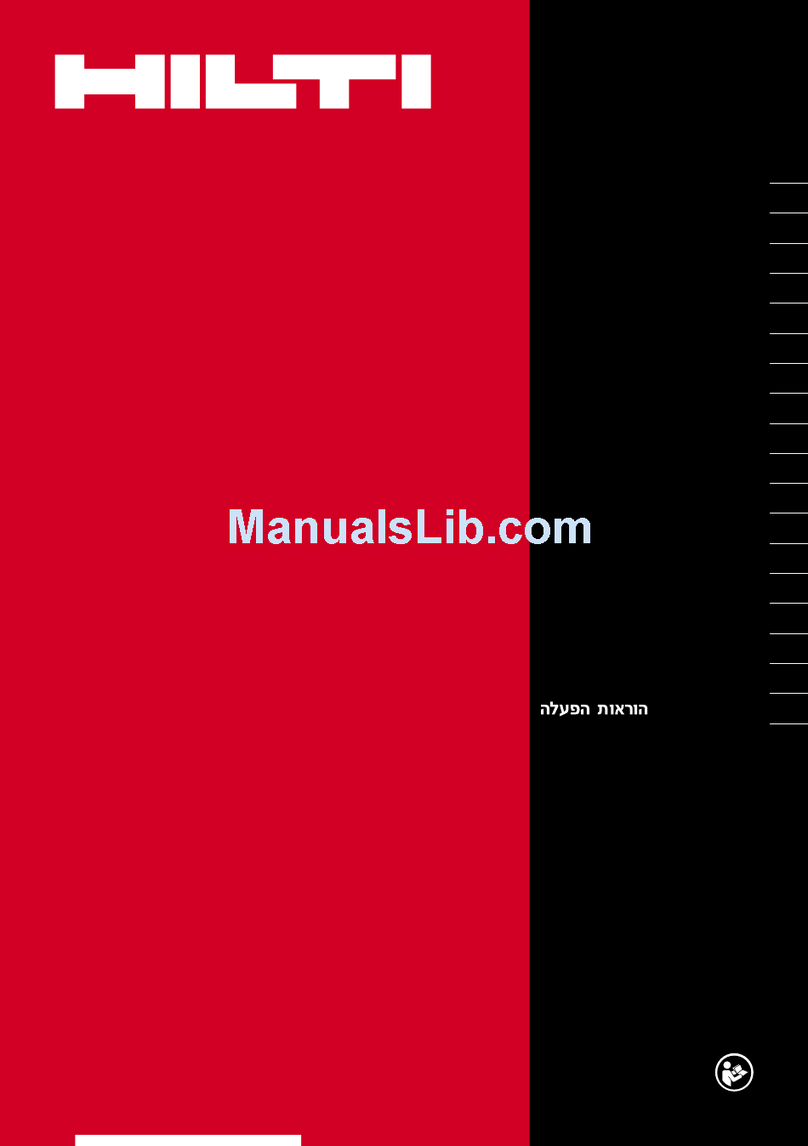12
en
5.3 General safety precautions
●Use the right electric tool for the job. Do not use the
tool for purposes for which it was not intended. Use
the tool only as directed and when it is in faultless con-
dition.
●Avoid contact with rotating parts.
●Use only the original accessories or ancillary equip-
ment listed in the operating instructions. Use of other
insert tools or accessories may present a risk of per-
sonal injury.
●Take the influences of the surrounding area into account.
Do not expose the tool to rain or snow and do not use
it in damp or wet conditions. Do not use the tool where
there is a risk of fire or explosion.
●Keep the grips dry, clean and free from oil and grease.
●Always hold the tool with both hands on the grips pro-
vided.
●Operate the tool only as directed and only when it is in
faultless condition.
●When not in use, the tool must be stored in a dry place,
locked up or out of reach of children.
●Avoid unintentional starting. Do not carry the tool with
your finger on the on/off switch. Ensure that the on/off
switch is in the "off” position before plugging the sup-
ply cord into the electric socket.
●Disconnect the supply cord plug from the socket when
the tool is not in use (e.g. during breaks, before main-
tenance and before changing insert tools).
●Switch the tool off before transporting it.
●Take care of your insert tools. You will be able to work
more efficiently and more safely if the insert tools are
kept sharp and clean. Observe instructions on care and
maintenance and on changing insert tools.
●Check that moving parts function faultlessly and that
they are not sticking or damaged. All parts must be
correctly fitted and fulfil all requirements in order to
ensure that the tool operates faultlessly.
●Check the electric tool for possible damage. Protec-
tive devices and any parts that may have suffered slight
damage should be checked for correct operation and
functionality before further use of the electric tool.
Damaged safety devices or other damaged parts should
be replaced or repaired properly by an authorized repair
workshop unless otherwise indicated in the operating
instructions.
5.3.1 Mechanical hazards
●Follow the instructions concerning care and mainte-
nance.
●Check that the scaffold hook and belt hook are securely
attached.
●Check that the insert tools used are compatible with
the chuck system and that they are secured in the chuck
or gear housing correctly.
5.3.2 Electrical hazards
●Protect yourself against electric shock. Avoid body
contact with earthed / grounded objects, e.g. pipes,
radiators, cookers and fridges.
●Check the condition of the supply cord at regular inter-
vals and, if found to be damaged, have it replaced by
a trained electrical specialist. Check the condition of
extension cords at regular intervals and replace them
if found to be damaged.
●Check the condition of the tool. Do not operate the tool
if it is found to be damaged, if it is not complete or if
its controls cannot be operated faultlessly.
●Do not touch the supply cord in the event of it suffering
damage while working. Disconnect the supply cord
plug from the socket.
●Damaged switches must be replaced at a Hilti service
center. Do not use the tool if it cannot be switched off
and on properly.
●The tool may be repaired by trained electrical specialists
only (Hilti service) using original Hilti spare parts. Failure
to observe this point may present considerable risk to
the user.
●Do not use the supply cord for purposes for which it
is not intended. Never carry the tool by the supply
cord. Do not pull the plug out of the socket by pulling
the supply cord.
●Do not expose the supply cord to heat, oil or sharp
edges.
●When working outdoors, use only extension cords
approved and correspondingly marked as suitable for
outdoor use.
●In the event of a power cut: Switch off and unplug the
tool.
●Avoid using extension cords with multiple sockets for
simultaneous use of several electric tools or
appliances.
●Never operate the tool when it is dirty or wet. Dust or
dampness on the surface of the tool make it difficult
to hold and, under unfavorable conditions, may lead
to electric shocks.
5.4 Requirements to be met by users
●The tool is intended for professional use.
●The tool may be operated, serviced and repaired only
by authorized, trained personnel. This personnel must
be informed of any special hazards that may be encoun-
tered.
●Always concentrate on the job you are doing. Proceed
carefully and do not use the tool if your full attention
is not on the job.
